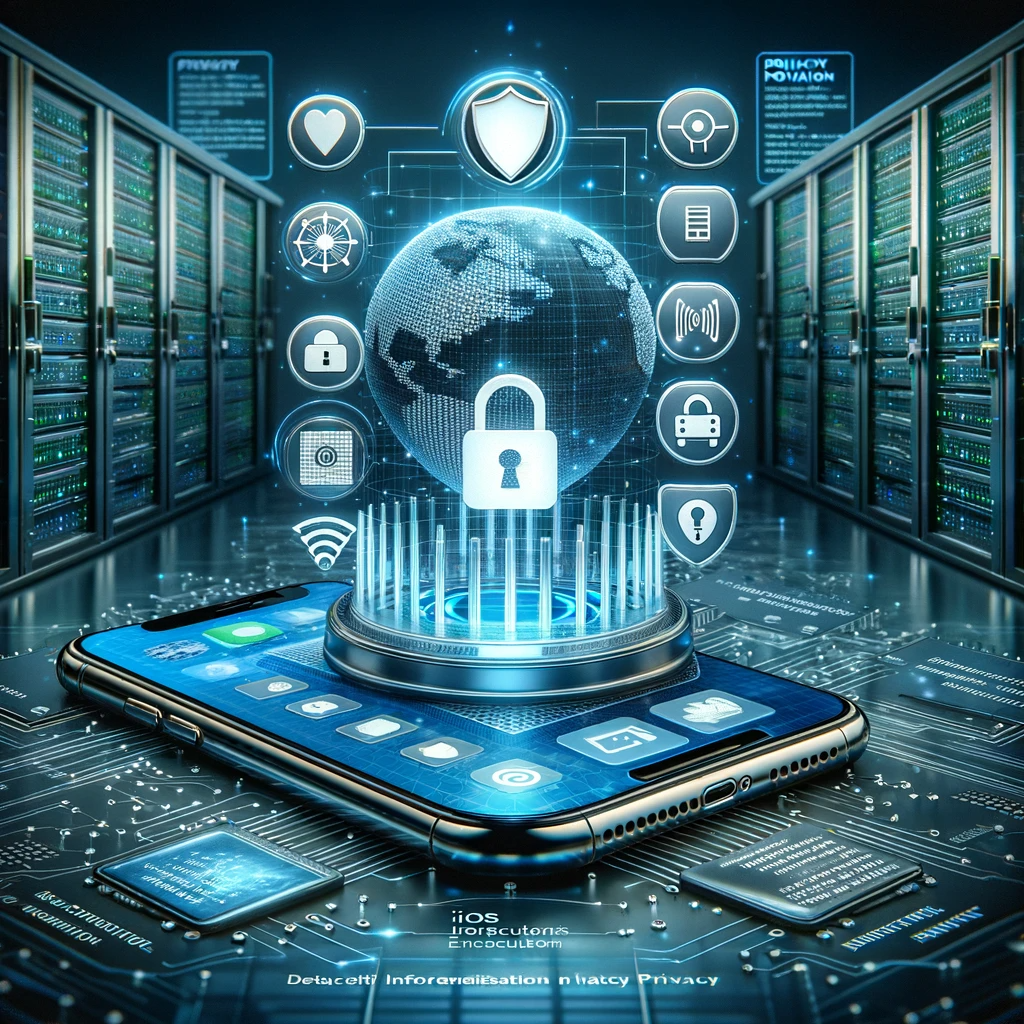iOS Security Protecting Your Data and Privacy
In the ever-evolving world of mobile technology, iOS remains at the forefront of both innovation and security. As an English writer, understanding how to protect your data and privacy on iOS devices, such as iPhones and Apple Watches, is crucial. In this article, we will delve deep into the intricacies of iOS security, providing you with the knowledge and tools to ensure your information remains secure.

The Foundation: Apple’s Commitment to Privacy and Security
Apple has long been a pioneer in prioritizing user privacy and security. The iOS operating system is built with multiple layers of security to safeguard your personal data. One fundamental layer of security is your Apple ID, which serves as your gateway to iCloud, the App Store, and a plethora of Apple services. It’s imperative to choose a strong, unique password for your Apple ID and enable two-factor authentication for an extra layer of protection.
Advanced Data Protection: The Cornerstone of iOS Security
iOS offers advanced data protection features that help keep your information secure, even if someone gains physical access to your Apple device. Your data is encrypted, and a passcode is required to unlock your device, adding a significant barrier to unauthorized access. For added convenience and security, Face ID and Touch ID allow you to unlock your device effortlessly while maintaining a high level of protection.
iCloud: Protecting Your Data in the Cloud
iCloud is Apple’s cloud storage service, and it plays a pivotal role in iOS security. Your iCloud data is encrypted, and enabling two-factor authentication for your iCloud account is crucial. It provides an extra layer of security to prevent unauthorized access and data breaches. Furthermore, you can back up your iOS device to iCloud, ensuring that your data remains protected and accessible, even if your device is lost or damaged.
App Store and Third-Party Apps: Safeguarding Your Privacy
While the App Store offers a plethora of useful apps, it’s essential to be cautious when downloading third-party applications. Always verify the app’s credibility and permissions it requests. iOS 15 introduced the App Privacy Report, allowing you to monitor how apps use your data. Review this report regularly to stay informed about potential privacy concerns.
Find My iPhone: A Powerful Security Tool
Find My iPhone is a valuable feature that helps you locate and protect your device if it’s lost or stolen. It allows you to remotely lock your device, display a custom message, or erase your data to prevent unauthorized access. Enabling this feature should be a top priority for every iPhone user.
Sign in with Apple: A Secure Alternative
“Sign in with Apple” is a convenient and secure way to access third-party apps and websites without revealing your personal email address. It provides an extra layer of security by generating unique, disposable email addresses for each service, reducing the risk of data leaks and spam.
iOS Updates: Staying Ahead of Security Vulnerabilities
Apple regularly releases iOS updates to address security and privacy vulnerabilities. Keeping your iOS device up-to-date is essential to protect against the latest threats. Go to Settings > General > Software Update to ensure you have the latest security patches installed.
Privacy Settings: Take Control of Your Data
iOS and iPadOS offer an array of privacy and security settings that allow you to fine-tune your device’s behavior. Control which apps have access to your location data, health data, and more. Review and adjust these settings regularly to align with your privacy preferences.
Mail Privacy Protection and Hide My Email
iOS 16.3 introduced Mail Privacy Protection, which prevents senders from knowing when you open an email. Additionally, the “Hide My Email” feature allows you to generate random email addresses for online services, enhancing your privacy and reducing spam.
Lockdown Mode: An Extra Layer of Security
In situations where you feel your privacy and security are at risk, iOS 16 introduced Lockdown Mode. This feature disables biometric authentication methods (Face ID and Touch ID) and requires your passcode for unlocking. It’s a valuable tool for protecting your data in high-risk situations.
Conclusion: Prioritizing Your iOS Security
In an age where data breaches and privacy concerns are rampant, protecting your iOS device is paramount. Utilize the robust security features offered by Apple, such as two-factor authentication, advanced data protection, and privacy settings, to ensure your personal data remains secure. By following these guidelines and staying informed about the latest security practices, you can enjoy the convenience of mobile technology while safeguarding your privacy.
Don’t compromise your privacy and security – stay ahead with iOS 16’s advanced features and enjoy the peace of mind that comes with knowing your data is protected.
In summary, iOS security is a multifaceted topic that encompasses various layers of protection, privacy settings, and advanced features. By taking advantage of these tools and staying informed about the latest security practices, you can enjoy the convenience of mobile technology while safeguarding your privacy and sensitive data. Protect your personal information like a pro, and enjoy a worry-free experience with your Apple device.
